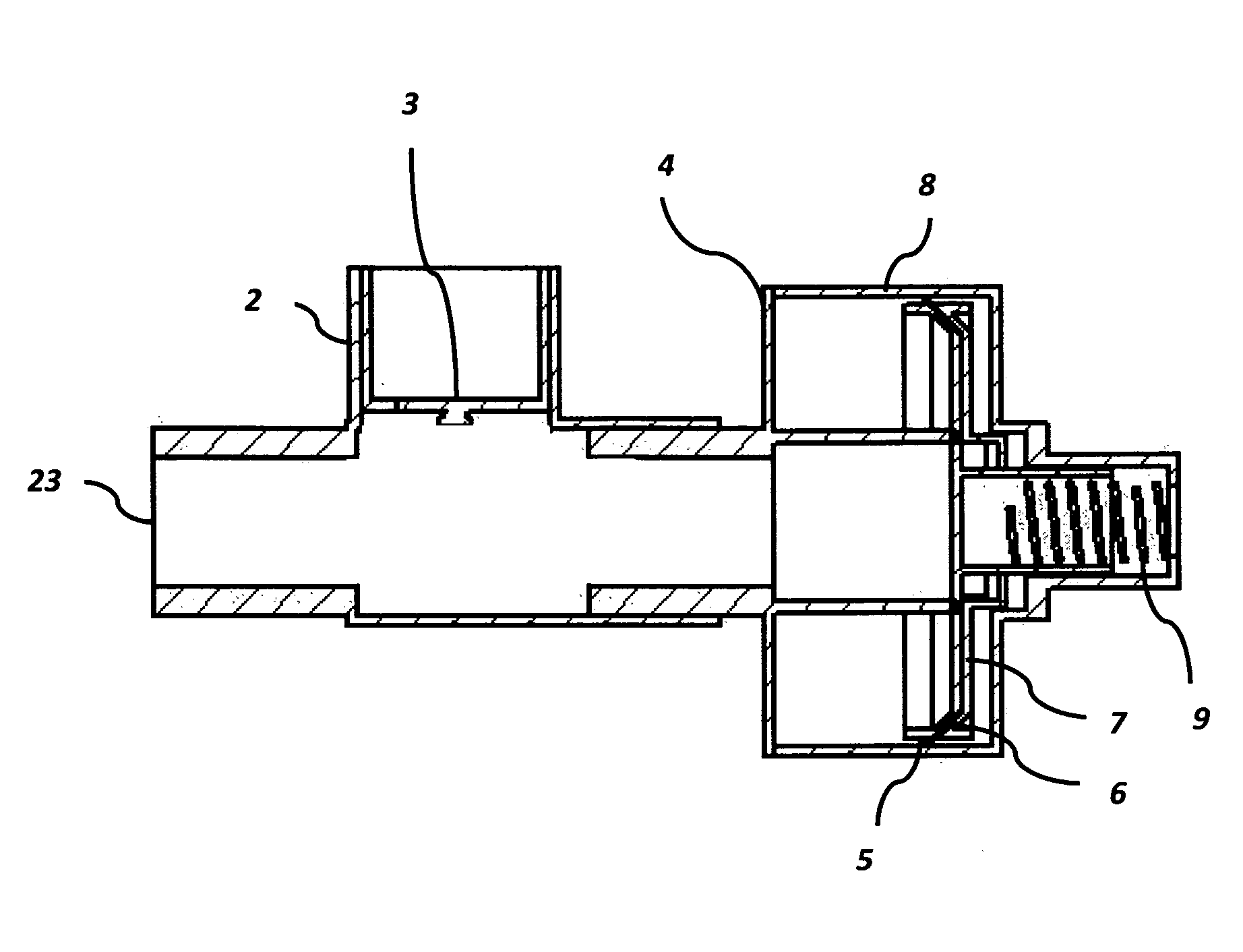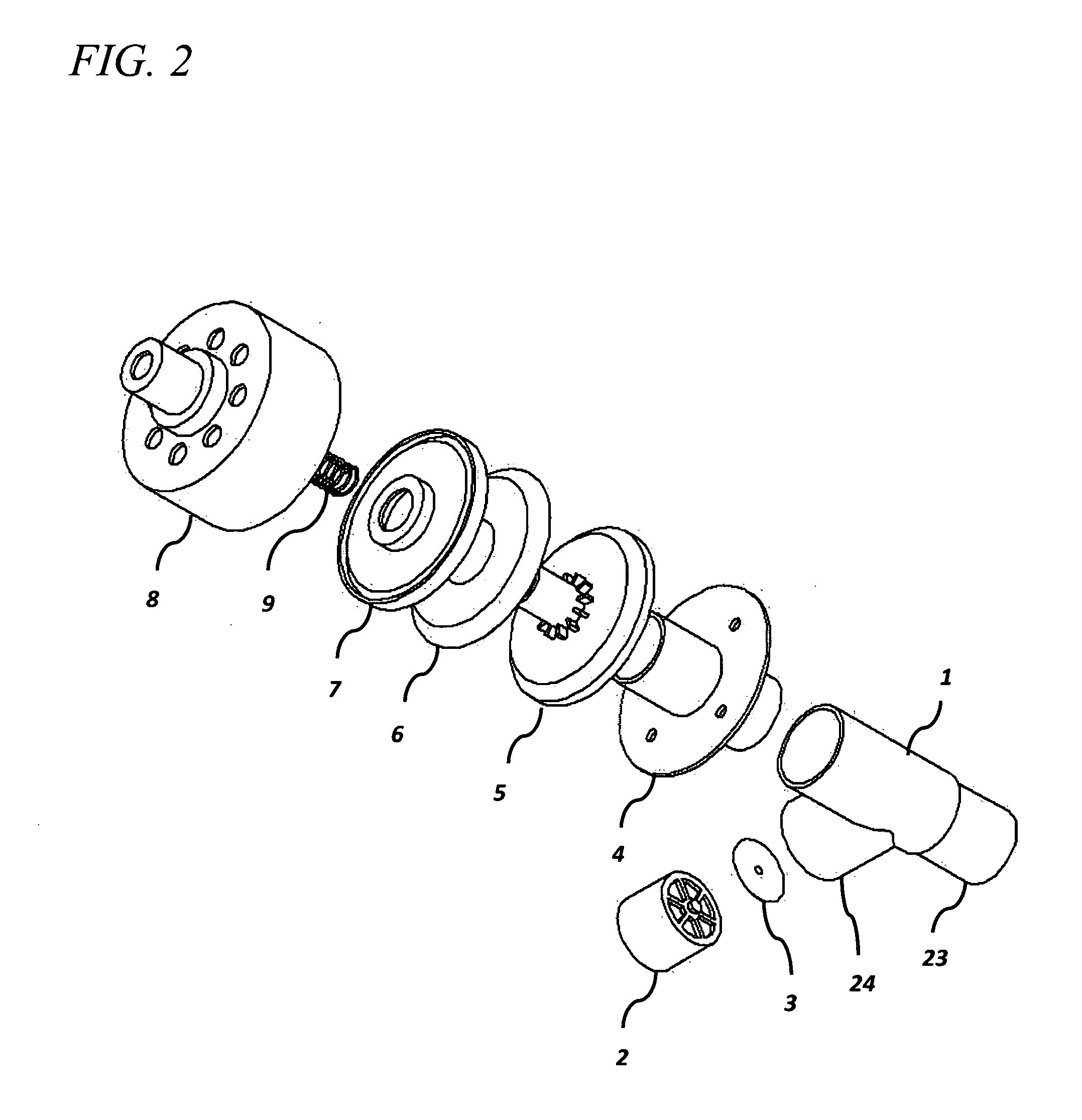Enhanced means for regulating intrathoracic pressures
a technology of intrathoracic pressure and enhanced means, which is applied in the direction of respirators, respirator, respirator, etc., can solve the problems of insufficient inducible patient respiration, frequency and/or amplitude interruption of pattern, etc., and achieves less force, increased cardiopulmonary circulation, and increased cardiopulmonary circulation
- Summary
- Abstract
- Description
- Claims
- Application Information
AI Technical Summary
Benefits of technology
Problems solved by technology
Method used
Image
Examples
example
[0080]A test procedure was developed for evaluating the performance of the present invention against a no pressure management control scenario and competitive intrathoracic pressure control technologies.
[0081]An intrathoracic model was constructed by starting with two polyurethane open cell foam blocks with dimensions of 12″×12″×4″, a tensile strength of 9 psi, a density of 2.8 lbs / cubic ft, a firmness of 0.57 psi (25% deflection), and a fine cell texture type (McMasterCarr PN 8643k712). A section of foam was removed from one of the 12″×12″ faces of one of the foam blocks, hereafter referred to as the first foam block, such that a half spherical section measuring three inches in diameter by one and one half inches deep was removed from the center of the 12″×12″ face. An adjoining 2″ semi-circular conduit was then removed on the same face of the first foam block extending from the half spherical section to the mid point of one of the four edges defining the 12″×12″ face. A twelve inc...
PUM
 Login to View More
Login to View More Abstract
Description
Claims
Application Information
 Login to View More
Login to View More - R&D
- Intellectual Property
- Life Sciences
- Materials
- Tech Scout
- Unparalleled Data Quality
- Higher Quality Content
- 60% Fewer Hallucinations
Browse by: Latest US Patents, China's latest patents, Technical Efficacy Thesaurus, Application Domain, Technology Topic, Popular Technical Reports.
© 2025 PatSnap. All rights reserved.Legal|Privacy policy|Modern Slavery Act Transparency Statement|Sitemap|About US| Contact US: help@patsnap.com



